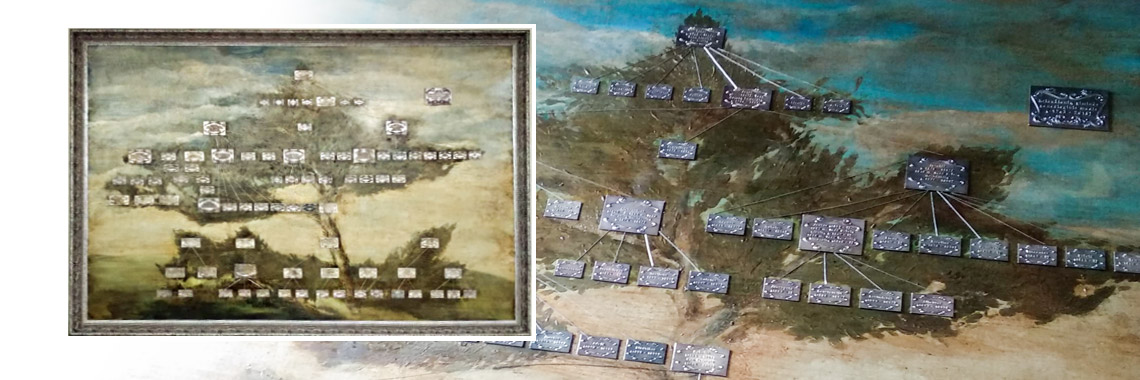Finding one’s roots is a tedious task. That is probably the reason why only few of us do the digging in the archives. Even though majority only knows their grandpa’s and grandma’s names (no, not the dates, as it seems they were born sometime around when the world started!) yet still some do know everything about their great-grandparents! Lithuanian jeweller Simonas Balkaitis was challenged to make a piece of art depicting a family tree spanning for almost 250 years. He turned to 3D printing and electroplating resin prints to fulfil his vision. We asked him to share the details of this exciting project with everyone.
Project
A couple of months ago we received a custom order for a family tree starting from the year 1776! Not only dates, but names, details, wives and husbands. As family already had all the details, our task was to visualize the tree and turn it into a splendid piece of art. Information was arranged into 84 text boxes each containing 3–15 words to represent different family members. Of course, one could take the old-school approach (brushes, paints, varnishes, lacquers, etc.) and spend days painting the tree and rewriting the whole text. But what a tedious job it would be! As we are more into jewellery metal plating business – we have decided to tackle this order in a more modern way.
The plan was to make 84 text plates and silver plate them, then paint the tree on a big piece of wood (to last ages, as canvas would be too weak to hold the silver plated plates) and attach the plates to the painting. The first challenge was to find a way to make the text plates. We thought about 3D printing, but our previous experience with silver plating FDM 3D printed objects was upsetting. At that time details turned out of very poorly. Luckily, we turned to AmeraLabs and they offered us SLA 3D printing. Using AmeraLabs’ AMD-3 LED black material and Epax X1 3D printer we managed to produce incredibly detailed text plates with tiny letters that were of excellent quality and sharp enough for silver plating. It was just what we hoped for!
Design for 3D printing
There’s so much to tell about our experience making this project. First of all, we’ve never made any STL files ourselves. AmeraLabs agreed to help us with advice and printing a few prototypes. So, we tried several web-based 3D modelling software. It was tough to jump into it with no prior experience. After some alternative investigations we found that AutoDesk’s 3DS Max has the option to output STL files. Luckily, we already had some experience with 3DS Max. It was quite simple to make a box with extruded text. Then we wanted to add some decorations. We achieved this quite easily with displace function which allows merging black & white picture with your 3D object and extrude only the white areas.

As we had our first designs – sent them to AmeraLabs for their review and advice. After their revision we had to optimize letters’ size, spacing and extrusion. Eventually, we used 1 mm depth boxes with 0.5 mm text and decoration extrusion. Plate sizes ranged from 40×30 mm to 85×45 mm with central (family information plate) at 110x70x3 mm. We had to thicken the biggest one as it was very difficult to 3D print. Once we were happy with the design, we printed them on Epax X1 3D printer.
3D printing
To avoid layer lines on flat surfaces we printed all plates standing on their edges. We lifted them from the build plate on supports to avoid the negative effect of over-cure expansion of bottom layers. To Increase adhesion, we also added an attachment layer and printed 6-7 smaller plates at once. For AmeraLabs AMD-3 resin we used 0.05 mm layers with 3.5 s exposure time, 160 s bottom layer exposure time, and slow lift speeds of 40 mm/min.

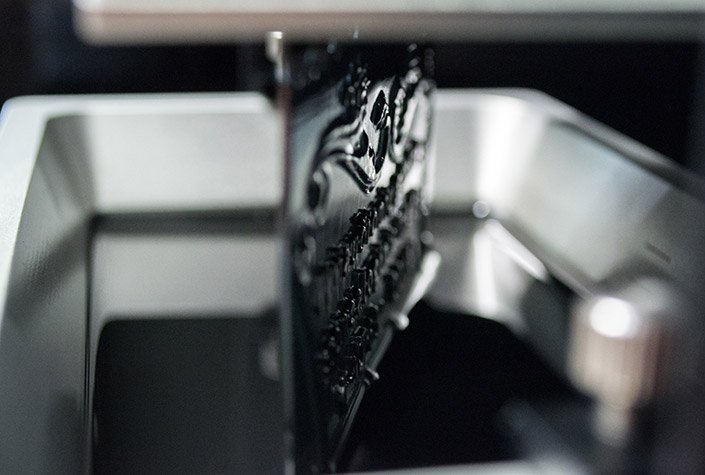
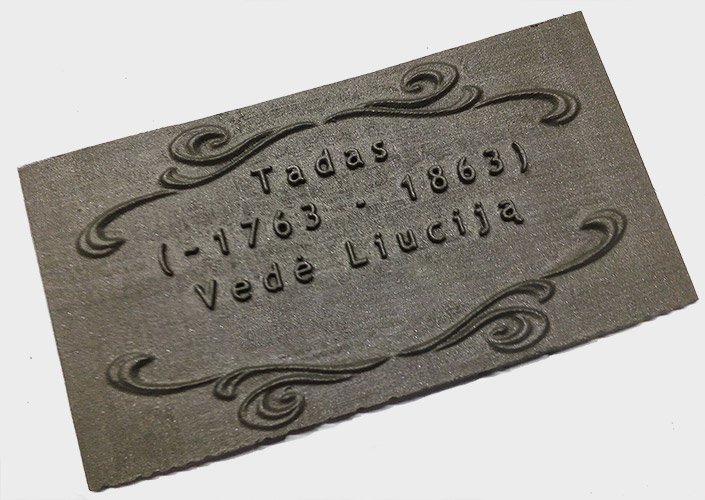
Copper electroplating resin 3D prints
Electroplating, or galvanization, is a well known process which is usually applied for commercial everyday products. Typical electroplating bath consists of 2 electrodes: your product (the one that metal grows on) and sacrifice electrode (the one that will be consumed), solution (many possible formulations) and power source.
With 84 printed plates at hand it was time to metal plate them. We used electrolysis to initially deposit a layer of copper. It acts as support, gives strength and can also be silver plated.
Solution for copper plating is mainly composed of copper (II) sulphate, sulfuric acid (can be used concentrated or diluted, similar to the one used in car batteries), deionised or distilled water and commercial additives. Water-acid-sulphate ratio differs greatly, depending on your circumstances. However, there are dedicated forums and groups (or electroplating chemical distributors) that can offer you plenty of information. Typically it takes 12-24 hours of galvanization for a single object or a set of objects (depending on your bath size).

Delightfully, the 3D printed objects with AMD-3 material were resistant to sulphuric acid, copper sulphate and prolonged exposure to water. We kept some resin 3D prints submerged in this mixture for a few hours to make sure it won’t deform during electroplating.
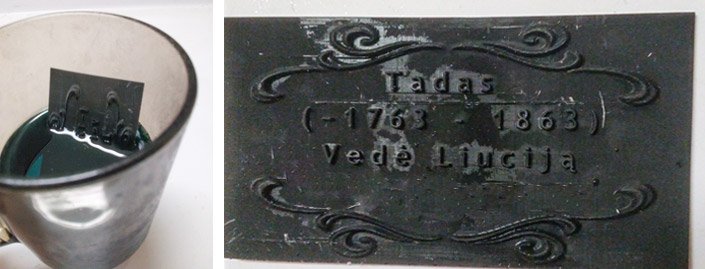
Initially we were thinking of using these 3D printed plates as templates for metal plating. We thought to metal plate only one side and then remove the plastic part. However, for one test plate we tried detaching metal from plastic and it was fine until we started pulling metal from the letters. There’s simply much more surface to attach on letter, thus it is harder to detach. We concluded that a thicker stronger metal layer should detach easier, but as the plastic was only 1 mm thick, we decided to leave it.
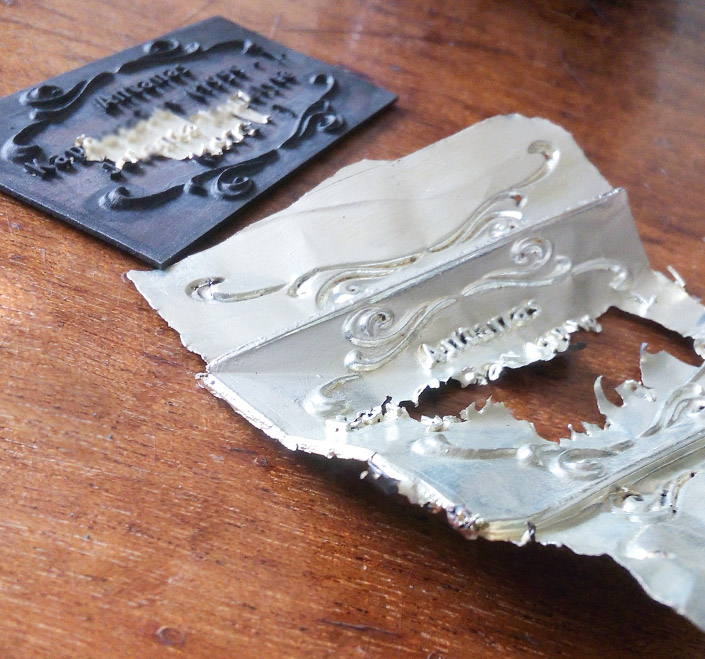
Electroplating Process: From Conductive Paint to Silver Finish
Before initiating the electroplating process, each 3D-printed plate was meticulously coated with conductive paint. This crucial step ensured even metal deposition during the electroplating process. Conductive paint creates a uniform conductive layer on the resin prints, facilitating better adherence of the metal layers. After applying the conductive paint, we proceeded with the copper electroplating, which provided a sturdy base layer.
Silver electroplating resin 3D prints
When all the resin 3D prints were copper plated, it was time to polish, degrease, wash, and activate the copper surface for silver electroplating.
Silver plating is more complex and dangerous. One might actually die of poisoning if cyanide based silver plating setup is used without proper ventilation. CYANIDE AND ACIDS DON’T GO TOGETHER! However, there are some non-cyanide based patent protected formulations for silver plating baths. It’s safest to buy it from a respected manufacturer and use accordingly.
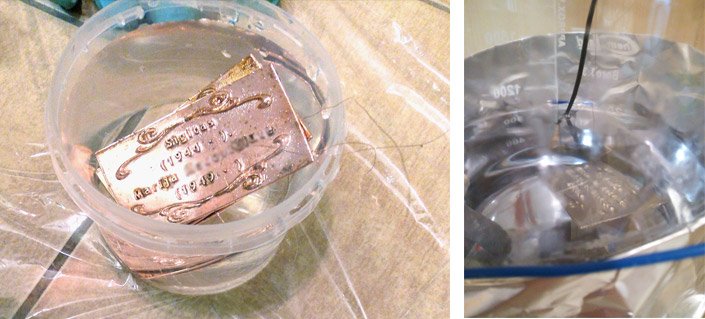
After that we again had to polish and age the plate to obtain antique look, darker corners and higher contrast of letters.
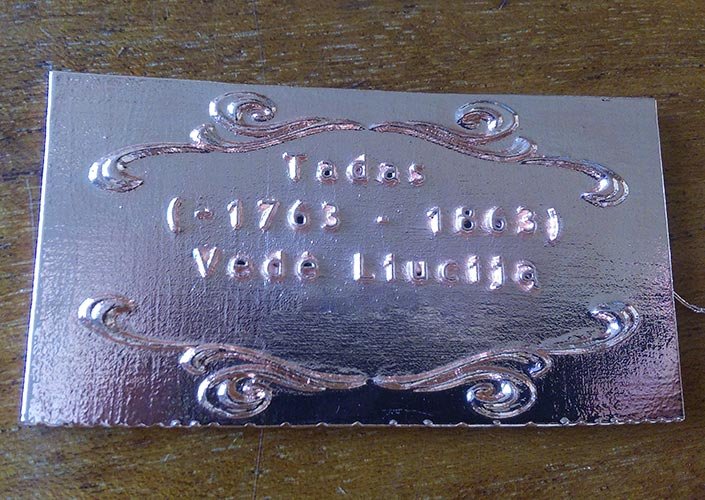
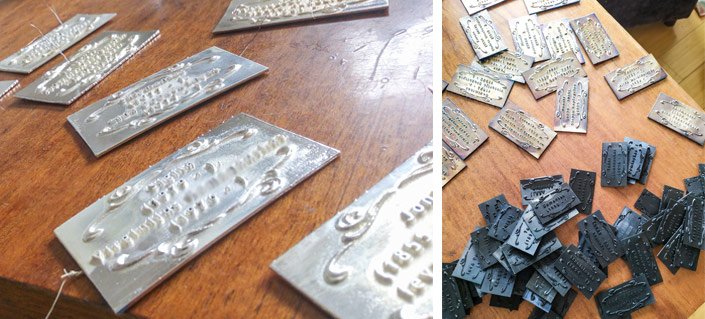

Painting the base
As soon as this was all done, it was time to buy a piece of wood for the painting. We purchased 1.75×1.15 m board which barely fit into our car! We painted the tree and attached the silver plated text plates onto the painting.
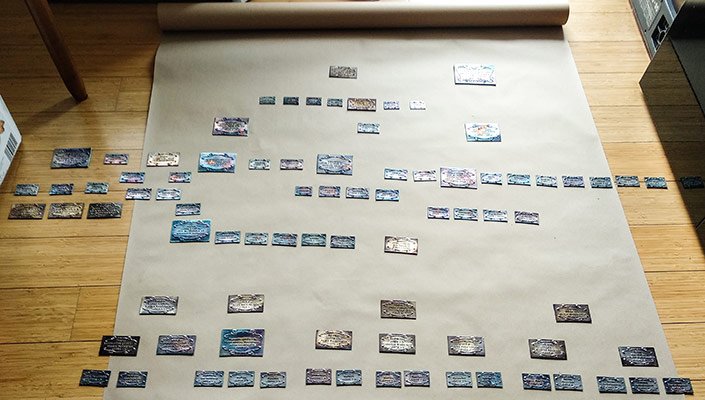
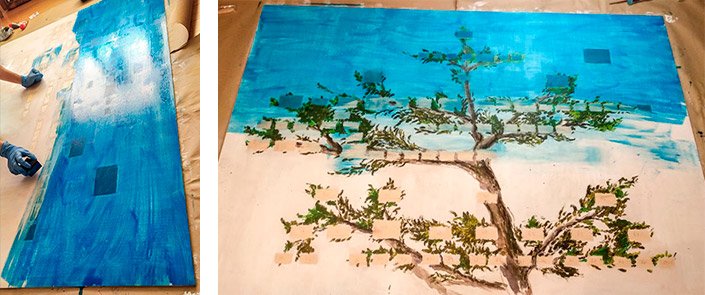
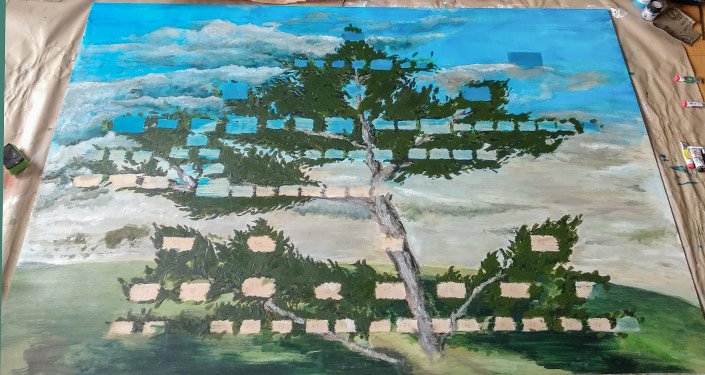


Experience/lessons learned
It’d be hard to precisely estimate the time spent on this project, which was quite exciting and interesting for us. Roughly, it took 7 days from zero 3D modelling experience to 3D printing of test pieces. Then we spent one productive day making the whole set of 84 text plate STL files and rechecking them with AmeraLabs. Resin 3D printing was fast and took only a few days. We copper plated all 3D prints in one week and silver plated them in two more days. Oddly, we had to wait 2 weeks to get a piece of wood for our painting. Finally, it took several days to paint, attach the plates and finish up the project. In reality it took couple of months.
I hope this was helpful. If you have any questions, send us a message and we’ll do our best to answer them.
About Simply Simon Botanic Jewellery
Simonas is the owner of Simply Simon Botanic Jewellery. You can check his work on his website simplysimon.store and also follow him on Facebook and Instagram.
Simply Simon Botanic Jewellery aims to entrap and excel the beauty of all the gorgeous temporary wonders of nature. Each jewellery piece begins with collection of raw materials, selection and preparation. Then, by use of electroplating Simon immortalizes the fragile masterpieces of nature – electroplated copper encapsulates the living matter and overtakes it’s form. A real metamorphosis, transmutation of lifeless copper source into a living jewellery is the key step behind all of Simon’s products. All sorts of accompanying finishes are available (aging, patina, special paints) in order to transmutate the metal plated object into a unique and eye-catching jewellery. Eventually, a true piece of art awaits for it’s new happy owner.

Here are some other articles that might be interesting for you:
- How to Make Jewellery with Silicone Mold
- Case Study: ViLim Ball – therepeutic device with 3D printed housing
- Case Study: 3D printed button for Porsche steering wheel
- Case Study: 3D printed Linear Gear for Extensometer
- How to design parts for SLA 3D Printing
- 10 reasons why you get unexpected horizontal lines on your 3D printed parts
- Attachment Layer in SLA 3D printing: what you need to know
Also, have a look at our SHOP. We have some great resins to choose from!
